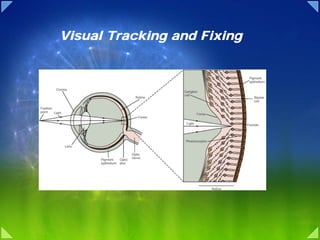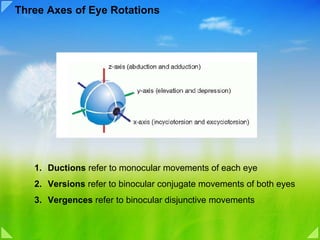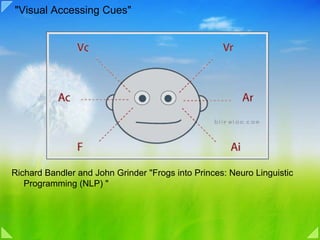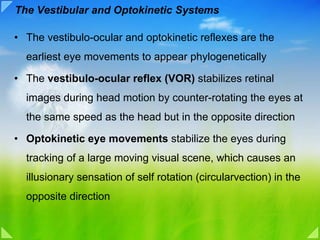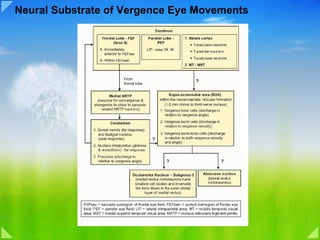Visual tracking involves three types of eye movements: version movements that move both eyes together, vergence movements that move the eyes in opposite directions, and miniature movements that occur during fixation. The vestibulo-ocular reflex and optokinetic system help stabilize images on the retina during head motion. Saccades rapidly shift gaze between objects of interest by signals from brainstem and cortical regions. Smooth pursuit and vergence movements keep moving targets on the fovea through pathways involving cortical and subcortical structures like the cerebellum.
